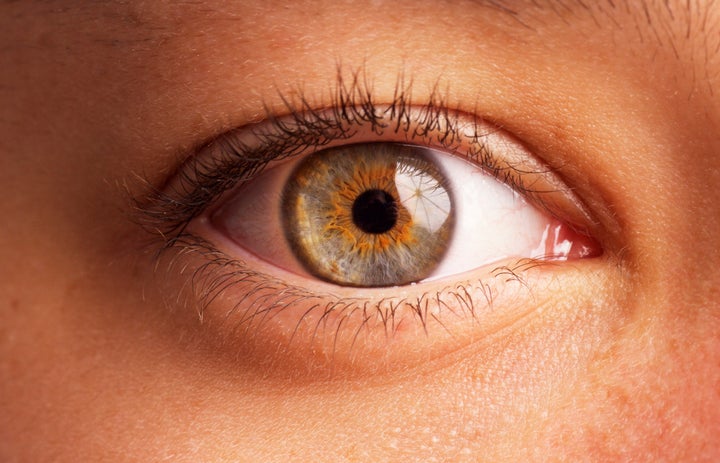We’ve all experienced it – the feeling that comes with being stared at. Sometimes you can’t even see them, but you can still sense their gaze.
A glance over the shoulder often proves our instincts right. So why are we so good at detecting other people’s eye movements? And can we really sense that someone is watching us when they’re not even in our field of vision?
She explains that there are several factors which help us to identify where people are looking.

Large white sclera and smaller pupils
Humans’ eyes are different from pretty much every other species’. Dempsey-Jones explains: “The area of our eye surrounding our pupil (the sclera) is very large and completely white. This makes it very easy to discern the direction of someone’s gaze.” Despite this, we can only detect gaze within four degrees of our central fixation point, meaning we have to rely on other clues too.
Body movements
This is where our peripheral vision proves pretty useful. Dempsey-Jones says that the positions and movements of others’ heads is major pointer when it comes to detecting their gaze. But she adds when we feel anxious, our mind can play tricks on us, making us think people are looking when they’re not: “This may be an adaptation to prepare us for interactions that are about to occur, particularly if the interaction may be threatening.”
Our brains are hardwired to spot and process gaze
Even newborns prefer looking at people who stare right back at them, suggesting our ability to focus on others’ gaze is innate. For decades, neuroscientists have been investigating how the process plays out.
Back in 1985, scientists identified a specialised group of neurons which process gaze in the brains of monkeys. Many believe there is a dedicated neural network in humans’ too.
So why is so much cognitive power devoted to working out where people are looking? Well, Dempsey-Jones explains that it affects our psychological reactions to people: “It is a large cue in establishing social dominance. Also, here’s a tip: direct gaze makes people appear more trustworthy and attractive (you’re welcome). [...] Gaze also helps unconsciously regulate turn-taking in our conversations.” People look while listening and look away while talking.
The sixth sense explained
But none of this explains why we think someone is staring at us when we can’t even see them. Plenty of scientists have investigated the phenomenon, but Dempsey-Jones says any study proposing psychic powers should be treated with a dose of skepticism:
“Sadly for those who wish we were X-men, it appears much of the body of research supporting the ‘psychic staring effect’ appears to be suffering from methodological issues, or unexplained experimenter effects.”
In some experiments, experimenters who act as the watcher are more successful than others at getting people to detect their stares. But Dempsey-Jones says: “It is almost certainly an unconscious bias, perhaps due to initial interactions with the experimenter.”
But in many cases, there might be an even simpler explanation. The neuroscientist explains that by looking over your shoulder, you’re drawing attention to yourself, which might shift someone’s gaze in your direction:
“When your eyes meet, you assume this individual has been looking all along. Situations where this happens are more memorable than when you look around to find no one looking at you.”
It looks like we’ll have to settle for a pair of rear-view sunglasses instead.
